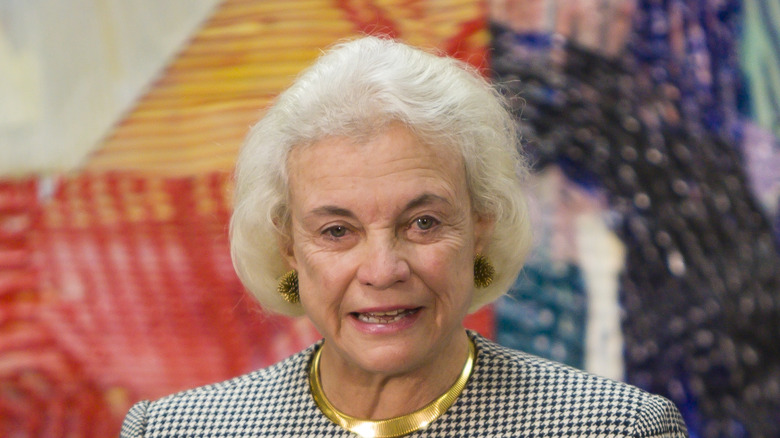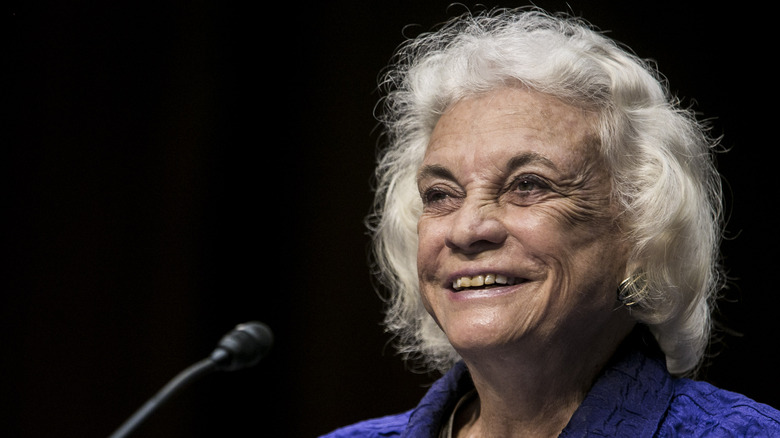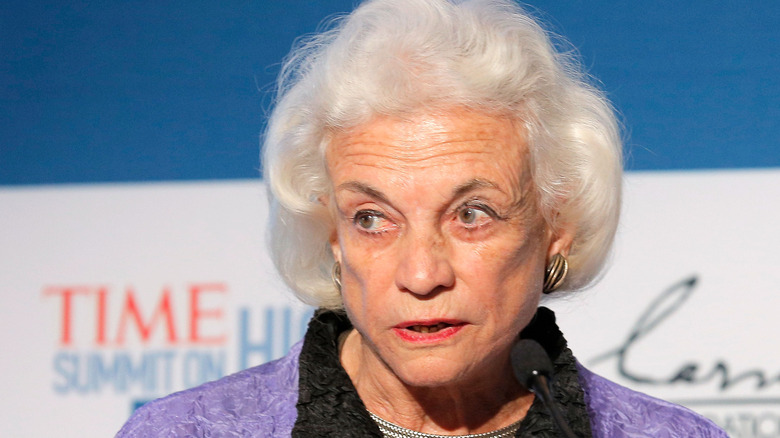Sandra Day O'Connor Dies; First Female Supreme Court Justice Dead At 93
The Supreme Court announced that former Justice Sandra Day O'Connor died in Phoenix, Arizona on December 1, 2023, CNBC reported. She died "of complications related to advanced dementia, probably Alzheimer's, and a respiratory illness," the court said. She revealed she had been living with the disease in a 2018 letter, per CNN. "I will continue living in Phoenix, Arizona surrounded by dear friends and family," she wrote. "While the final chapter of my life with dementia may be trying, nothing has diminished my gratitude and deep appreciation for the countless blessings of my life."
O'Connor was the first woman to sit on the Supreme Court. She was nominated by President Ronald Reagan and inspired a generation of women to get into law. "I hope that I have inspired young people about civic engagement and helped pave the pathway for women who may have faced obstacles pursuing their careers," she wrote in her letter.
After her death, U.S. Supreme Court Justice John Roberts released a statement praising her achievements. "Sandra Day O'Connor blazed an historic trail as our Nation's first female Justice," he said, per Rolling Stone. "She met that challenge with undaunted determination, indisputable ability, and engaging candor."
A pragmatic justice
Sandra Day O'Connor began serving on the Supreme Court in 1981. Though she was appointed as a conservative, her ideology put her at odds with modern conservatives given her support for the right to abortion, equality-based legislation, and distancing church and state. During her time as a justice, some called the court "O'Connor Court" because of how much sway she held over key issues. Indeed, she was often the deciding vote on issues involving abortion, religion, sex discrimination, and more.
Though some took O'Connor's pragmatism as a lack of principles or commitment to a side, former clerk Marci Hamilton pushed back against such criticism. "Those would be the people who have never met her," she said (per CNN). "Anyone who has met her knows that she makes up her own mind and is not at all concerned where anyone else is on the spectrum."
She had trouble getting into law as a woman
When Sandra Day O'Connor first started trying to get into law, she had difficulty because of her gender. After gaining her bachelor's in economics and her law degree from Stanford University, she experienced the sexism that was all too common at the time. "We had notices on our placement bulletin board at Stanford Law School from law firms all over California saying, Stanford Law graduates, call us if you want to get an interview for employment," she told NPR in 2013. "We'd be happy to talk to you. I called at least 40 of those firms asking for an interview and not one of them would give me an interview. I was a woman and they said we don't hire women."
Though she could have become a legal secretary, she turned to the public sector and made her way through various offices as an attorney, eventually becoming the first female majority leader in the United States after landing a job for the Arizona Senate in 1973. When she became a justice in 1981, her experiences as a woman in the field of law drove her approach. "I felt a special responsibility on every issue ... It became very important that I perform in a way that wouldn't provide some reason or cause not to have more women in the future. That was very important to me," she told NPR.


